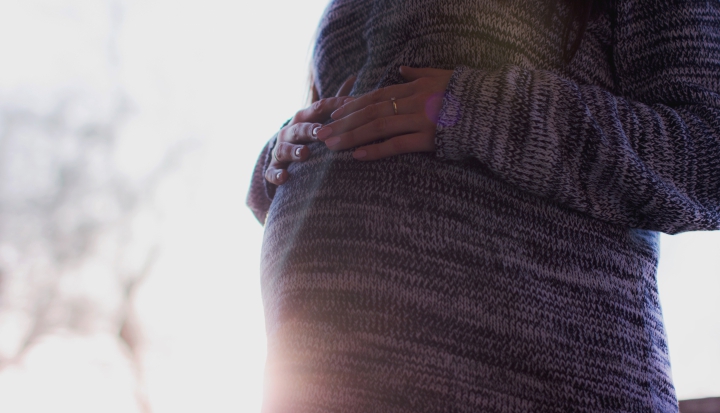As I entered the second trimester of my fourth pregnancy, my right leg became inflamed with dark purple varicose veins. As the pregnancy progressed and the summer temperatures rose, my varicose veins became worse. By the end of the summer, they totally covered my calf and ankle. When people saw them, they would wince and ask “Don’t they hurt?” They did, but worse than any physical pain was seeing the look of disgust in people’s eyes as their gaze traveled down to my leg. More than one person insisted, “Surely something can be done for that.”
The shame and body hatred in my fourth pregnancy took me by surprise. These feelings are certainly not unusual. It is common for women to feel insecure as the pounds increase, their ankles swell, and their bodies change shape. Women who have recovered from eating disorders often relapse during pregnancy as they struggle with feelings of fullness and their changing body shapes.
Weight gain, though, is a normal and celebrated part of pregnancy. For women who struggle, there are numerous resources that can help them come to accept the goodness of their changing body. My varicose veins, while common, were certainly not “normal” and not something that anybody was celebrating. The only solution to varicose veins is surgery, which, if done for cosmetic reasons, is not covered by insurance nor recommended for pregnant women like me.
Because of the rise of eating disorders and body image problems, more Christians are becoming attuned to the practical implications of the doctrine of the incarnation. God, in assuming full life in the flesh and the total spectrum of vulnerability that entails, affirms the goodness of our bodily existence. This is a central Christian doctrine and is one that cannot be neglected if we are to respect the full dignity of the embodied human person.
In coming to terms with the shame and embarrassment that accompanied my varicose veins, it was not the incarnation that offered me most comfort. Rather, it was the wounds of Christ.
Wounds typically indicate some sort of bodily defect. They certainly do not connote beauty. Christ, who rises with his wounds, turns this on its head. His wounds are glorified and are the way in which he affirms to the apostle Thomas that in the resurrection. He is the same Christ who suffered and died out of love for us. The brokenness of Jesus’ body is an indispensable part of his identity.
Augustine writes in the City of God, “Perhaps [in the Kingdom of God] we shall see on the bodies of the martyrs the traces of the wounds which they bore for Christ’s name: because it will not be a deformity, but a dignity in them; and a certain kind of beauty will shine in them.” I think about this when I see my varicose veins, or when I see on other women the stretch marks and C-section scars that are the visible signs of the children they bore into the world. Though it is so hard to challenge cultural assumptions of beauty, I am beginning to see in those “wounds” something profoundly beautiful, dare I even say glorious. And though I still struggle with accepting the realities of my body, I have stopped covering up my varicose veins. These are my wounds of love.
This article also appears in the November 2017 issue of U.S. Catholic (Vol. 82, No. 11, page 10).














Add comment